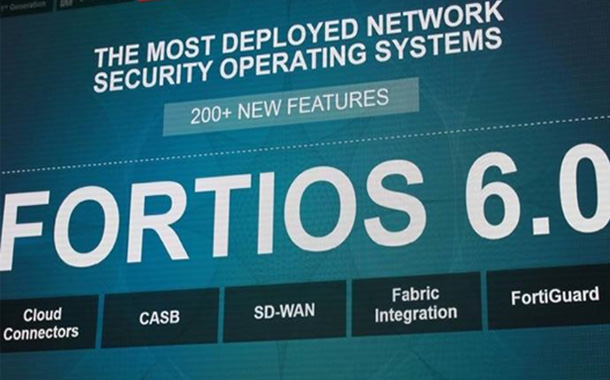FortiOS 6.0 delivers more than 200newcapabilitiesacross Security Fabric to automate security operations and protect the digital attack surface
Michael Xie, Founder, President and CTO at Fortinet said, “Digital transformation is creating new operating and service delivery models that provide undeniable value to users through technologies such as IoT, mobile computing and cloud-based services, generating a vast digital attack surface. As the speed and scale of cyber threats expands, security must take on its own transformation by integrating into all areas of digital technology and be able to translate user intent into automated business response. FortiOS 6.0 delivers hundreds of new features and capabilities that were designed to provide the broad visibility, integrated threat intelligence and automated response required for digital business.”
Fortinet announced at its global partner and user conference, Accelerate 18, the evolution of its Security Fabric architecture with the release of FortiOS 6.0, the world’s most deployed network security operating system. With more than 200 new features and capabilities, enterprises will benefit from new levels of security operations automation and advanced protections for their expanding digital attack surfaces.
- Fortinet introduces new security capabilities across the key solution areas within its Security Fabric architecture, including management and analytics, multi-cloud, network, advanced threat protection, unified access, web applications, email, IoT and endpoint security.
- Industry-leading secure SD-WAN functionality, threat detection services, and expanded visibility from IoT to multi-cloud networks protect the vast attack surface resulting from digital transformation (DX) strategies.
- New automated lifecycle workflows, attack surface hardening services, with customized ranking and industry benchmarking, deliver the next level of NOC/SOC management.
- Business, network and entity level tagging functionality enable business precise segmentation, providing the critical building blocks for intent-based network security.
Broad Visibility, Integrated Detection and Automated Response
According to a Gartner survey, in EMEA, 47 percent of the CIO respondents have a dedicated digital business team. It also revealed that few of these teams (16 percent) are made up of IT associates only. “While IT delivery is still a responsibility of the CIO, achieving revenue growth and developing digital transformation were identified most often as top business priorities for organizations in 2018,” according to Gartner.
As companies look to transform everything from their business operating models to service delivery methods, they are adopting technologies such as mobile computing, IoT and multi-cloud networks to achieve business agility, automation and scale. The increasing digital connectedness of organizations is driving the requirement for a security transformation, where security is integrated into applications, devices, and cloud networks to protect business data spread across these complex environments.
The Fortinet Security Fabric is an integrated and automated security framework designed to protect today’s dynamic networks. It provides the broad visibility, integrated detection of advanced threats, and automated response, combined with the continuous trust assessment required to secure today’s digital business.
Available in Q1 2018, the FortiOS 6.0 release provides critical capabilities required to secure the digital attack surface spurred by digital transformation. Business Precise Segmentation Delivers Foundation for Intent-Based Network Security
Fortinet introduces business precise segmentation through tagging, delivering the building blocks enterprises need to move towards intent-based network security. Organizations can tag devices, interfaces and objects at the business, entity, and network level and set global policies for automatic enforcement when new objects are created on the network. This level of tagging is foundational to intent-based network security architecture as it enables business precise segmentation, automated management and control of all network elements.




